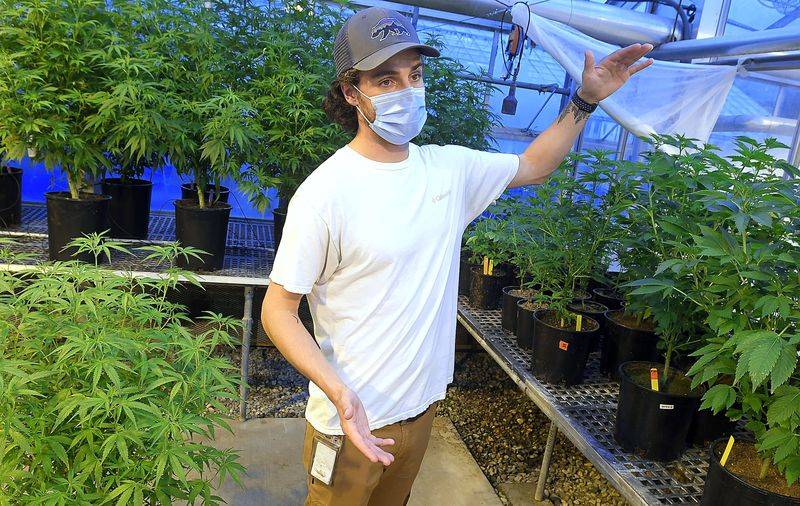Researchers at Utah State University are busting pot myths as they study hemp and grow cannabis.
“All these people that have been growing it illegally, they didn’t study science in school, like biology and all the principles, so they make a lot of observations and a lot of bizarre conclusions,” said Bruce Bugbee, the USU professor over the project. “Like you need to plant at the full moon … and the world of cannabis is full of stuff like that.”
Here’s a lists of myths and busts:
Myth: You need specific colours of light to produce higher yields. Busted, says Bugbee, whose YouTube video on the subject has received more than a million views.
Myth: Growers need to use an exorbitant amount of phosphorus to produce more flower. Busted, says Mitch Westmoreland, the Ph.D. student running the lab at USU’s greenhouse. “The implications are huge just because phosphorus is a huge pollutant,” he said. “It’s polluting the lakes and the rivers, and people just dump it on in agriculture.”
Myth: Planting on a full moon makes for better cannabis crops. Not busted, more study needed? “I really wanted to plant on the full moon, but we couldn’t swing that,” said Dr. Matt Yost, an assistant professor and an agroclimate specialist.
Before you get too skeptical, consider this: Ninety years ago, hemp researchers at Utah State University grew cannabis for rope and had no way to test the THC content in crops other than smoking it and monitoring the effects. Research halted in 1970 when then-President Richard Nixon signed the Controlled Substances Act.
Now that it’s legal to grow once more USU researchers are back at it — only this time, they’re using technology and testing to determine the optimal ways to grow the plant for high yield and cannabinoid content, and what that means for Utah growers.
(Cannabis plants that come in with more than 0.3% THC are referred to as marijuana, while hemp refers to those with low THC and higher CBD counts. Where there are only eight growers in the state licensed to farm medical-grade marijuana, there are roughly 12 farms in Cache Valley that received permits to grow hemp.)
Many farmers decided to try their hand at growing hemp for CBD after the Farm Bill legalizing hemp production passed in 2018. But like USU’s researchers, it was a new product and not all fields had a profitable outcome.
“We got approval to study it in the field in April, and we planted in May,” Yost said. “It was fast — like a lot of the farmers last year.”
Another problem outdoor growers are seeing is that hemp is “finicky.” In addition to farmers’ only option for herbicides being pre-emergent — as hemp generally needs to be planted from cloned cultivars to exclude male plants from crops — it needs massive care.
Hemp has also become far less profitable to grow, researchers say.
“Back when this was legalized, you know, two years ago, a year and a half ago, the price was around $20 a pound, so it was worth it for a lot of people to go into it,” Westmoreland said. “Since the market was saturated with growers across the nation growing for CBD, the price has gone down to about $5 a pound.”
— Paul Bucci with Associated Press

